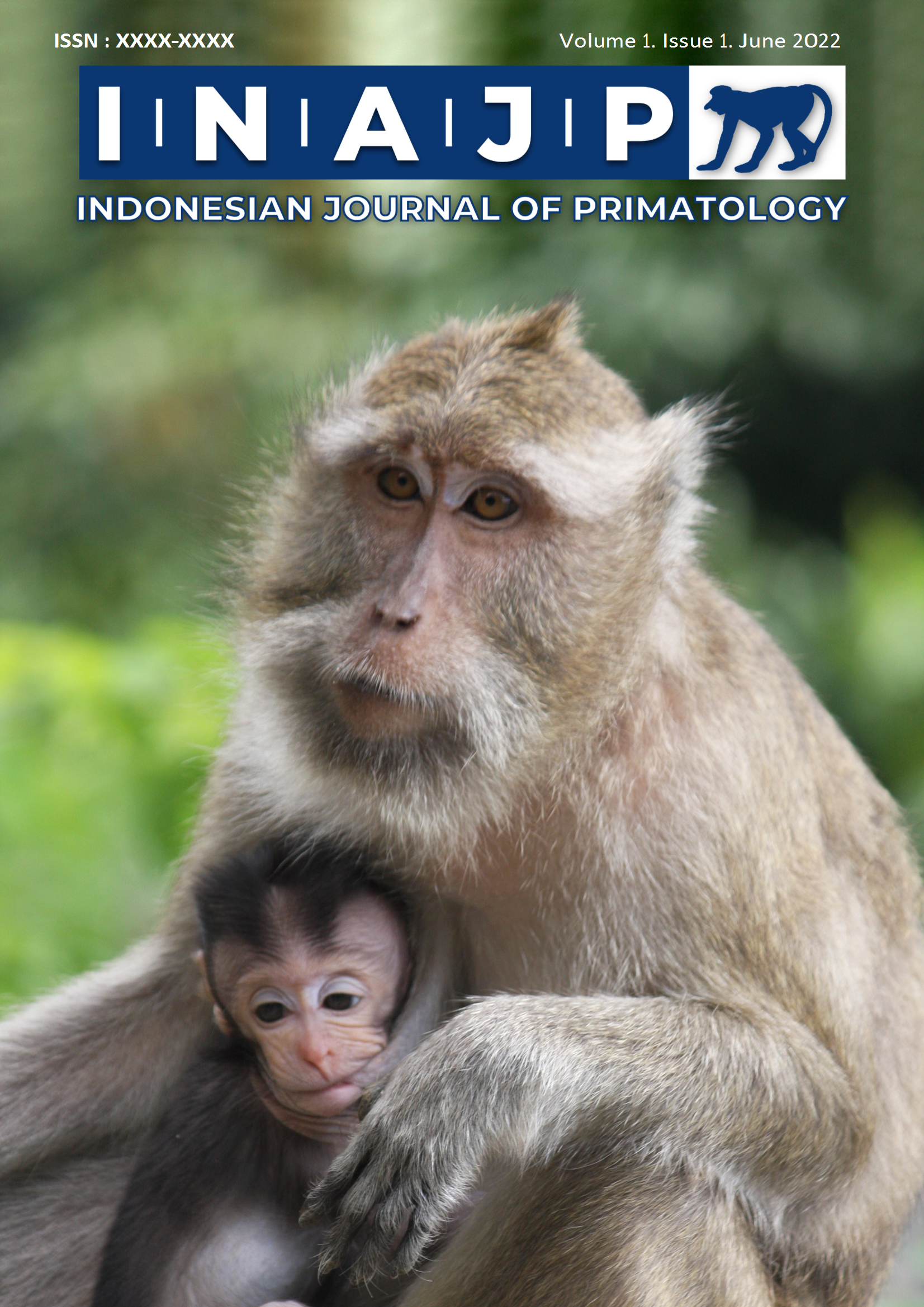Daily Behaviour of Long-tailed Macaque in the Captive, Semi-wild, and Wild Habitats: Preliminary Reports
DOI:
https://doi.org/10.29244/primatology.1.01.25-32Keywords:
activity, captive, cynomolgus macaque, endangered primate, Macaca fascicularis, tinjilAbstract
One of the endangered non-human primates, Macaca fascicularis, can adapt to various conditions of habitats, including full-housed, semi-wild, and natural habitats. This species has multi-male, multi-female social bonds that influence their daily behaviour activity. This study tried to describe the daily behaviour of Macaca fascicularis in their original habitats through a web-based survey. This study categorised the original habitat as captive, semi-wild, and wild. The focus of behavioural frequency data observed in all habitats includes feeding, locomotion, sleeping, grooming, playing, and aggression. This study used statistical analysis for each paired habitat. The daily behaviour for all pairs showed similar budgets, except for captive 1 and 2, which showed significant differences (p-value<0.05). Six behaviours showed no significant difference (similar frequency) in all habitats. The factors that impact the daily behaviour for each habitat include environmental enrichment and condition, natural resources, individual number proportion (group size), and response to human and anthropogenic disturbance.
Downloads
Downloads
Published
Conference Proceedings Volume
Section
License
As our aim is to disseminate original research articles, hence publishing rights is necessary. The publishing right is needed in order to reach an agreement between the author and publisher. As the journal is fully open access, the authors will sign an exclusive license agreement, where authors have copyright but license exclusive publishing rights in their article to the publisher. The authors have the right to:
- Share their article in the same ways permitted to third parties under the relevant user license.
- Retain patent, trademark, and other intellectual property rights including research data.
- Proper attribution and credit for the published work.
For the open access article, the publisher is granted the following rights.
- The exclusive right to publish the article, and grant rights to others, including for commercial purposes.
- For the published article, the publisher applied for the Creative Commons Attribution-NonCommercial-ShareAlike 4.0 International License.

This work is licensed under a Creative Commons Attribution-ShareAlike 4.0 International License.







